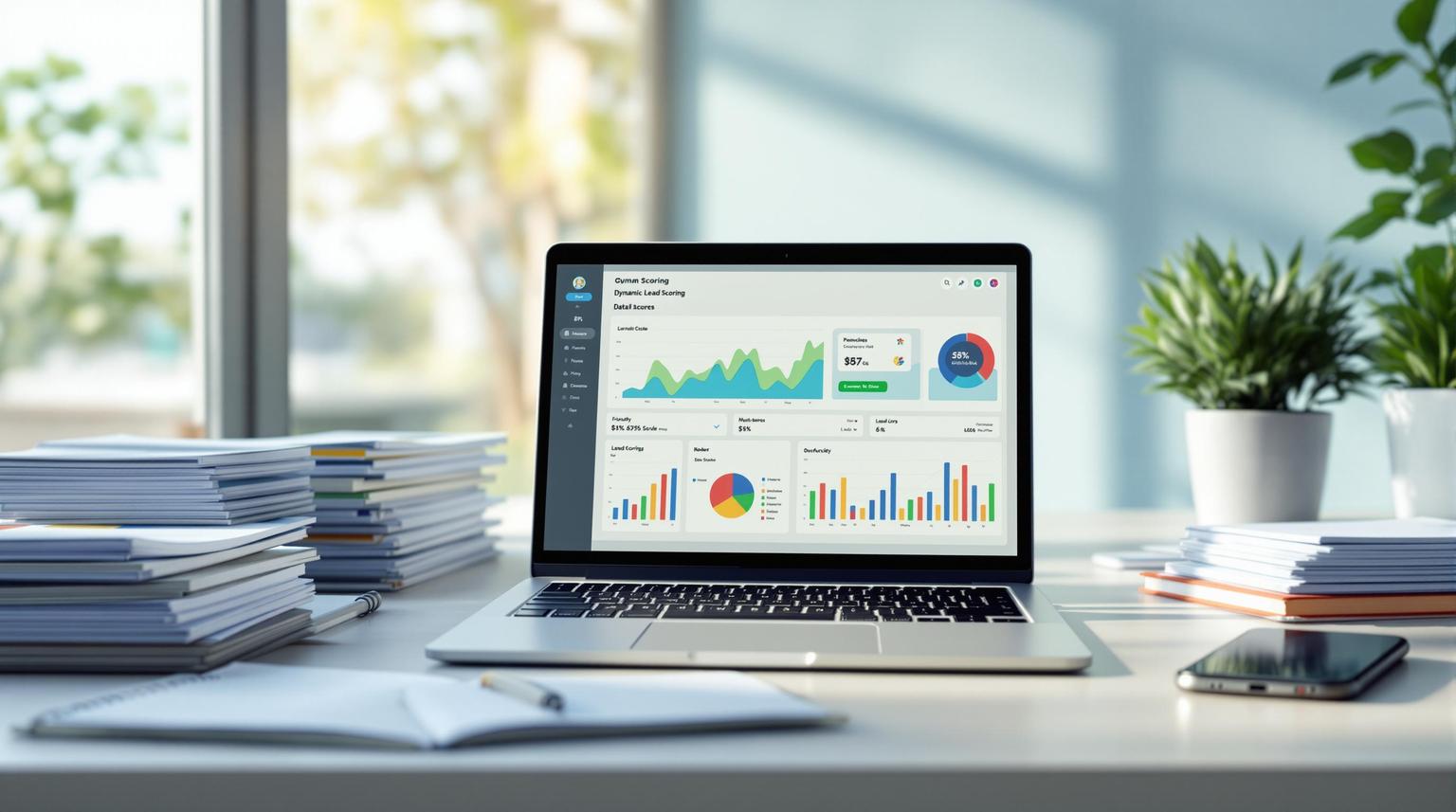Accurate sales forecasting is crucial for business success. It helps companies optimize resources, manage risks, and make informed decisions. Market trend analysis plays a vital role in sales forecasting by providing insights into consumer behavior, industry trends, and competitive landscape. This enables businesses to:
-
Predict Future Sales Trends
-
Identify New Opportunities
-
Develop Targeted Strategies
-
Stay Ahead of Competition
To conduct effective market trend analysis, businesses need to:
| Step | Description |
|---|---|
| Collect Relevant Data | Gather data on sales history, customer behavior, industry trends, market research, and competitor analysis. |
| Use Analytical Tools | Leverage tools like Excel, Tableau, SPSS, R, and specialized software for data analysis. |
| Apply Analytical Methods | Utilize quantitative methods (moving averages, regression analysis, time-series analysis) and qualitative data (customer feedback, expert opinions). |
| Integrate AI and Advanced Analytics | Leverage AI algorithms and advanced analytical software for improved accuracy and efficiency. |
| Avoid Common Pitfalls | Ensure data accuracy, relevance, and follow best practices for trend analysis. |
By integrating market trend analysis into sales forecasting, businesses can make informed decisions, develop effective strategies, and drive growth in an ever-changing market landscape.
Related video from YouTube
Data for Trend Analysis
Data is crucial for making informed business decisions. It helps businesses understand market dynamics, identify patterns, and anticipate future sales trends. In this section, we will explore the different types of data required for market trend analysis and the tools used to analyze them.
Data Types for Market Analysis
The following data types are critical for market trend analysis:
| Data Type | Description |
|---|---|
| Sales History | Analyzing sales data over time helps businesses identify patterns, cycles, and anomalies in sales trends. |
| Customer Behavior | Understanding customer behavior, preferences, and needs helps businesses develop targeted marketing strategies and optimize product offerings. |
| Industry Trends | Keeping up with industry trends and developments helps businesses stay ahead of the competition and identify new opportunities. |
| Market Research | Conducting market research provides valuable insights into consumer behavior, market size, and growth potential. |
| Competitor Analysis | Analyzing competitors' strengths, weaknesses, and strategies helps businesses identify areas for improvement and develop competitive strategies. |
Tools for Data Analysis
There are various tools available for data analysis, ranging from simple spreadsheet software to advanced analytics platforms. Some popular tools for data analysis include:
| Tool | Description |
|---|---|
| Excel | A popular spreadsheet software that offers basic data analysis capabilities. |
| Tableau | A data visualization tool that helps businesses create interactive dashboards and reports. |
| SPSS | A statistical analysis software that offers advanced data analysis capabilities. |
| R | A programming language and environment for statistical computing and graphics. |
| Data Analysis Software | Specialized software such as CRM systems, business intelligence platforms, and data visualization tools that offer advanced data analysis capabilities. |
By using these tools and analyzing the right data, businesses can gain valuable insights into market trends and make informed decisions to drive growth and revenue.
Analytical Methods for Sales Forecasting
Sales forecasting relies on various analytical methods to predict future sales trends and patterns. These methods can be broadly classified into two approaches: quantitative and qualitative.
Quantitative Methods for Sales Predictions
Quantitative methods involve using numerical data and statistical techniques to forecast sales. These methods are based on historical sales data and can help identify patterns, cycles, and trends.
| Method | Description |
|---|---|
| Moving Averages | Calculate the average sales over a specific period to forecast future sales. |
| Regression Analysis | Identify the relationship between sales and various factors, such as seasonality, pricing, and marketing campaigns. |
| Time-Series Analysis | Analyze historical sales data to identify patterns and trends, such as seasonal fluctuations or long-term growth. |
Quantitative methods are objective, reliable, and easy to implement. They provide a solid foundation for sales forecasting and can help businesses make informed decisions.
Qualitative Data in Sales Projections
Qualitative data involves non-numerical information, such as customer feedback, market research, and expert opinions. This data can provide valuable insights into customer behavior, market trends, and competitive dynamics.
| Use of Qualitative Data | Description |
|---|---|
| Identify Market Opportunities | Identify new market opportunities, such as emerging trends or untapped customer segments. |
| Refine Sales Strategies | Refine sales strategies and improve customer engagement by understanding customer needs and preferences. |
| Improve Product Development | Inform product development to ensure products meet customer needs and preferences. |
By combining quantitative and qualitative methods, businesses can develop a comprehensive understanding of their sales trends and make informed decisions to drive growth and revenue.
Strategic Planning with Market Analysis
Strategic planning is crucial for business growth, and market analysis plays a vital role in informing these plans. By analyzing market trends, businesses can make informed decisions about resource allocation, product development, and marketing strategies.
Understanding Market Growth and Consumer Trends
To stay ahead of the competition, businesses need to understand market growth and consumer trends. This involves identifying opportunities for growth, anticipating changes in consumer behavior, and adjusting strategies accordingly.
Tools for Understanding Market Growth and Consumer Trends
| Tool | Description |
|---|---|
| Market research reports | Provide insights into market size, growth rate, and consumer behavior. |
| Social media analytics | Offer insights into consumer preferences, opinions, and behaviors. |
| Customer feedback | Provides direct feedback from customers, helping businesses understand their needs and preferences. |
Competitive Analysis in Forecasting
Competitive analysis is critical for businesses to understand their position in the market and identify opportunities to gain a competitive edge. This involves analyzing competitors' strengths, weaknesses, and strategies.
Tools for Competitive Analysis
| Tool | Description |
|---|---|
| Competitor profiling | Provides detailed information about competitors, including their strengths, weaknesses, and strategies. |
| Market share analysis | Helps businesses understand their market share and identify opportunities to gain market share. |
| SWOT analysis | Identifies strengths, weaknesses, opportunities, and threats related to competitors. |
By leveraging market analysis, businesses can develop effective strategic plans that drive growth, revenue, and competitiveness.
sbb-itb-b22f30c
How to Conduct Market Trend Analysis
Conducting market trend analysis is a crucial step in informing business strategies and driving growth. In this section, we will provide a practical guide on how to conduct market trend analysis, from setting goals to applying insights to sales strategies.
Setting Goals and Reviewing Progress
Before starting market trend analysis, set clear and measurable goals. Identify what you want to achieve from the analysis, such as understanding consumer behavior, identifying emerging trends, or informing product development. Establishing goals will help you focus your research and ensure that you collect relevant data.
Regularly review progress to ensure that your analysis stays on track. Set milestones and deadlines to monitor your progress and make adjustments as needed.
Choosing Research Techniques
Select the right research techniques to collect accurate and relevant data. There are various techniques to choose from, including:
| Technique | Description |
|---|---|
| Surveys and questionnaires | Gather information about consumer attitudes, preferences, and behaviors. |
| Social media analytics | Analyze consumer opinions, preferences, and behaviors on social media platforms. |
| Competitor analysis | Identify strengths, weaknesses, and strategies of competitors. |
| Market research reports | Obtain insights into market size, growth rate, and consumer behavior. |
Choose techniques that align with your research goals and objectives.
Applying Trends to Sales Strategies
Once you have collected and analyzed data, apply the insights to your sales strategies. This involves:
| Step | Description |
|---|---|
| Identify opportunities | Pinpoint areas where your business can capitalize on emerging trends and consumer preferences. |
| Develop targeted marketing campaigns | Create marketing campaigns that resonate with your target audience and address their needs and preferences. |
| Refine product development | Use insights to inform product development and ensure that your products meet the evolving needs of your target audience. |
By applying market trend analysis to your sales strategies, you can stay ahead of the competition, drive growth, and increase revenue.
Technology in Sales Trend Analysis
AI in Forecast Models
Artificial Intelligence (AI) has transformed sales forecasting by improving accuracy and efficiency. AI algorithms can process large amounts of data, identify patterns, and make predictions with high precision. By integrating AI into forecasting models, businesses can:
-
Improve forecast accuracy: AI-driven models analyze historical data, seasonal trends, and external factors to generate more accurate sales forecasts.
-
Enhance decision-making: AI provides actionable insights, enabling businesses to make informed decisions about inventory management, resource allocation, and marketing strategies.
-
Reduce manual effort: AI automates data analysis, freeing up time for sales teams to focus on higher-value tasks.
However, AI integration also presents challenges, including:
-
Data quality issues: AI models require high-quality, relevant data to produce accurate forecasts. Poor data quality can lead to inaccurate predictions and misguided decisions.
-
Model complexity: AI models can be complex and difficult to interpret, making it challenging to identify the factors driving forecast results.
Advanced Analytical Software
Advanced analytical software is crucial for supporting sales forecasting. These tools enable businesses to:
| Capability | Description |
|---|---|
| Analyze large datasets | Process vast amounts of data, including customer behavior, market trends, and sales performance. |
| Identify patterns and trends | Identify patterns and trends that may not be apparent through manual analysis. |
| Generate actionable insights | Provide actionable insights, enabling businesses to make data-driven decisions about sales strategies, product development, and customer engagement. |
When selecting advanced analytical software, businesses should consider factors such as:
| Factor | Description |
|---|---|
| Data compatibility | Ensure the software can integrate with existing data systems and formats. |
| User experience | Choose software with an intuitive interface that is easy to use and interpret. |
| Scalability | Select software that can grow with the business, handling increasing volumes of data and complexity. |
Avoiding Pitfalls in Forecasting and Trend Analysis
Accurate sales forecasting and market trend analysis are crucial for businesses to make informed decisions and stay ahead of the competition. However, there are common mistakes that can lead to inaccurate forecasts and misguided decisions. In this section, we will discuss the common pitfalls to avoid in forecasting and trend analysis.
Ensuring Data Accuracy and Relevance
One of the most critical pitfalls to avoid is ensuring the accuracy and relevance of the data used for forecasting and trend analysis. Here are some tips to validate data accuracy and ensure it remains relevant over time:
| Tip | Description |
|---|---|
| Verify data sources | Ensure that data sources are credible and reliable. |
| Check for data inconsistencies | Identify and correct any inconsistencies in the data. |
| Update data regularly | Regularly update data to reflect changes in the market or customer behavior. |
| Use data validation techniques | Use techniques such as data profiling and data cleansing to ensure data accuracy. |
Best Practices for Trend Analysis
Conducting market trend analysis requires a structured approach to ensure accuracy and relevance. Here are some best practices to follow:
| Best Practice | Description |
|---|---|
| Define clear objectives | Clearly define the objectives of the trend analysis to ensure focus and direction. |
| Choose the right tools | Select the right tools and techniques for trend analysis. |
| Use multiple data sources | Use multiple data sources to validate findings and ensure accuracy. |
| Monitor and adjust | Continuously monitor the trend analysis and adjust as necessary to reflect changes in the market or customer behavior. |
By avoiding common pitfalls and following best practices, businesses can ensure accurate sales forecasting and market trend analysis, leading to informed decisions and strategic planning.
Recap: Sales Forecasting with Market Trends
Sales forecasting with market trend analysis is a powerful tool for businesses to make informed decisions and stay ahead of the competition. By integrating market trend analysis into sales forecasting, businesses can gain a deeper understanding of their customers, identify new opportunities, and develop strategies to drive growth.
Key Takeaways for Sales Teams
Here are the key points to remember:
-
Market trend analysis helps businesses understand customer behavior, preferences, and needs.
-
Sales forecasting with market trend analysis enables businesses to identify new opportunities and develop strategies to drive growth.
-
Accurate sales forecasting and market trend analysis are crucial for informed decision-making and strategic planning.
-
Businesses should avoid common pitfalls in forecasting and trend analysis, such as ensuring data accuracy and relevance, and using multiple data sources.
Adapting Sales Strategies
Market trend analysis is an ongoing process that requires continuous monitoring and adaptation. Here are some tips for adapting sales strategies:
| Tip | Description |
|---|---|
| Monitor market trends | Continuously monitor market trends and adjust sales strategies accordingly. |
| Stay flexible | Be willing to pivot sales strategies in response to changes in the market. |
| Identify new opportunities | Use market trend analysis to identify new opportunities and develop strategies to capitalize on them. |
| Align with business goals | Ensure that sales strategies are aligned with business goals and objectives. |
By following these tips and integrating market trend analysis into sales forecasting, businesses can develop a competitive edge and drive growth in an ever-changing market landscape.
FAQs
How do you forecast sales trends?
To forecast sales trends, follow these five steps:
| Step | Description |
|---|---|
| 1. Analyze past sales | Examine sales from the previous year. Break down the numbers by price, product, sales period, and other relevant variables. |
| 2. Consider changes | Modify your forecast based on changes you see coming, such as new product launches or entering new markets. |
| 3. Look at market trends | Consider external factors that might impact your sales, such as changes in the economy or consumer behavior. |
| 4. Monitor competitors | Keep an eye on your competitors' sales performance and adjust your forecast accordingly. |
| 5. Include business plans | Factor in your business plans and goals into your sales forecast. |
By following these steps, you can create an accurate sales forecast that helps you make informed business decisions.



